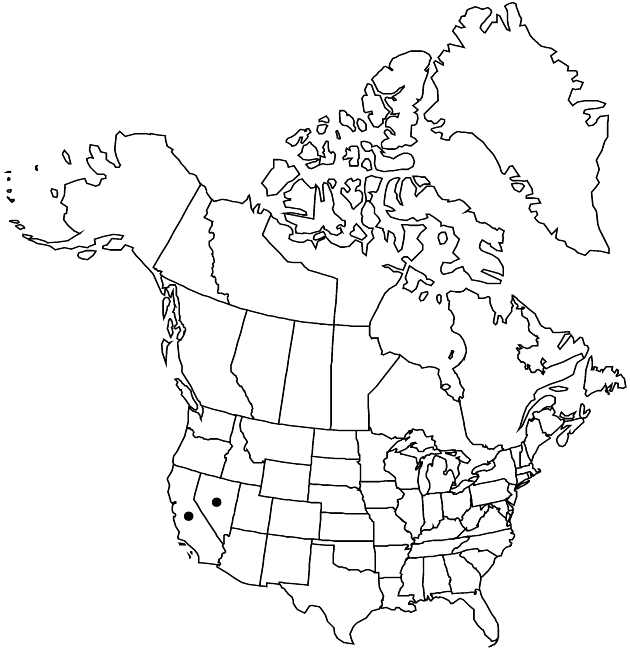Madia citrigracilis
Publ. Carnegie Inst. Wash. 564: 44. 1945.
Plants (10–) 25–60 cm, self-compatible (heads not showy). Stems hirsute to villous, distally glandular-pubescent, glands yellowish, purple, or black, lateral branches often surpassing main-stems (in large plants). Leaf-blades lanceolate to linear-oblong or linear, 3–15 cm × 2–14 mm. Heads in open, corymbiform arrays. Involucres ± globose to ovoid or obovoid, 6–8 mm. Phyllaries hirsute and glandular-pubescent, glands yellowish, purple, or black, apices erect or ± reflexed, flat. Ray-florets 5–8 (–14); corollas pale-yellow or greenish yellow, laminae 6–8 mm. Disc-florets 3–10 (–30), bisexual, fertile; corollas 2.5–3.5 mm, pubescent; anthers ± dark purple. Paleae mostly persistent, mostly connate 1/2+ their lengths. Ray cypselae black or brown, sometimes mottled, dull, compressed, beakless (or nearly so). Disc cypselae similar. 2n = 48.
Phenology: Flowering Jun–Aug.
Habitat: Openings in shrublands, woodlands, and forests
Elevation: 1400–2700 m
Discussion
Madia citrigracilis occurs in northeastern California and northern Nevada. Small or young plants can be exceedingly difficult to distinguish morphologically from M. gracilis, which is one of two putative parental species suggested by J. Clausen et al. (1945) to have been involved in the hybrid (allopolyploid) origin of M. citrigracilis. Molecular data reinforce Clausen et al.’s hypothesis that M. citrigracilis is evolutionarily distinct from M. gracilis.
Selected References
None.
